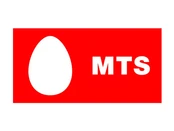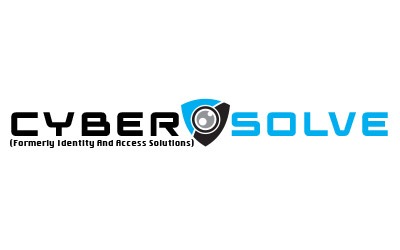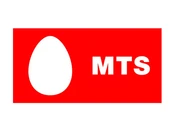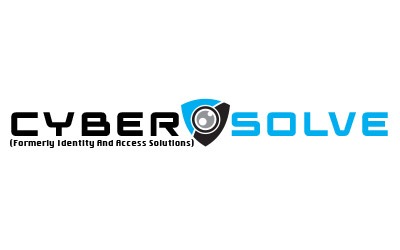
Effective leaders often employ various leadership styles to adapt to different situations and team dynamics. Let’s see those

What is Leadership style?
Leadership style (Or Management style) is your approach to reaching project, team, or company goals, encompassing interactions, planning, delegation, goal-setting, measurement, and decision-making.
On what basis Leadership styles are classified?
-
Interactions & Communication: Observe how they interact with coworkers, direct reports, supervisors, and project stakeholders. Analyze their feedback delivery, information relay, and reception methods.
-
Decision-Making: Assess their approach, considering input, introspection, and decision speed.
-
Values and Beliefs: Examine their perspectives on work, productivity, and relationships.
-
Leadership Traits: Evaluate their capacity to inspire, lead, envision projects, and attend to details.
10 most common Leadership Styles (LS)
1. Autocratic Leadership:
Identification of an Autocratic Leader: An autocratic leader typically:-
-
Exercises complete control over projects and teams.
-
Makes decisions without seeking input from others.
-
Emphasizes directives over inspiration. Rarely solicits feedback.
-
Provides feedback that tends to be critical rather than constructive.
Suitability of Autocratic Leadership: Autocratic leadership is most effective in crisis situations:-
-
Swift decision-making is crucial.
-
There’s limited time for gathering input and considering options.
-
The top-down approach is necessary for rapid progress.
-
Empowering team members may not be feasible due to urgent circumstances.
Pros:
-
Fast decision-making
-
No wavering on judgment
Cons:
-
Limited Employee Inspiration and Motivation
-
Lack of Diverse Input in Decision-Making
-
Limited Employee Growth Opportunities
2. Democratic Leadership:
Identification of a Democratic Leader:
-
Seeks and values input from team members, leadership, and stakeholders.
-
Prefers consensus and open discussion before making decisions.
-
May designate decision-makers other than themselves for varied opinions.
-
Prioritizes consideration and debate for a well-rounded project approach.
Suitability of Democratic Leadership:
-
Promotes inclusive decision-making and employee engagement.
-
Encourages diversity of perspectives and innovation.
-
Ideal for the early project stages to gather input on vision and direction.
-
Efficiently designates decision-makers for project details.
Pros:
-
Diverse perspectives enhance innovation and customer service.
-
Employee engagement and motivation are increased.
Cons:
-
Slower decision-making may hinder progress.
-
Potential for deadlocks and lack of cohesion in projects.
3. Laissez-faire Leadership:
Identification of a Laissez-faire Leader:
-
Takes a hands-off approach, letting team members work independently.
-
Minimal involvement in team activities.
-
Rarely seeks or provides feedback.
-
Team members make most decisions individually.
-
Communication of project vision may be lacking.
Suitability of Laissez-faire Leadership:
-
Effective for highly skilled and experienced teams, such as executives.
-
Can be used selectively during projects to promote decision-making skills and innovation.
Pros:
-
Fosters creativity and innovation among employees.
-
Encourages self-leadership and problem-solving skills development.
Cons:
-
May leave less experienced employees feeling unsupported.
-
Can lead to a lack of direction and cohesion in projects and teams.
-
Absence of clear vision or objectives for employees.
4. Bureaucratic Leadership:
Identification of a Bureaucratic Leader:
-
Relies on rules, policies, and standard procedures.
-
Extensively documents processes, goals, and communications.
-
Evaluates everyone using standardized criteria.
-
Makes decisions through established practices and channels.
Suitability of Bureaucratic Leadership:
-
Common in large organizations and government agencies.
-
Effective for maintaining consistency, equity, and streamlined communication.
Pros:
-
Efficient and consistent decision-making.
-
Clear expectations and standards for employees.
-
Streamlined communication and documentation.
Cons:
-
Potential for unnecessary procedures and paperwork.
-
May slow down projects or distract employees.
-
Lack of flexibility can foster an inequitable workplace.
5. Servant Leadership:
Identification of a Servant Leader:
-
Prioritizes employees’ needs, growth, and well-being.
-
Values strong relationships with employees.
-
Solicits feedback but may avoid offering criticism.
-
Focuses on employee happiness and team bonding.
Suitability of Servant Leadership:
-
An asset when balanced with other management styles.
-
Enhances employee engagement and cohesion.
-
Considers diverse employee needs.
Pros:
-
Employees feel heard and engaged.
-
Fosters team cohesion and care.
-
Acknowledges diverse employee circumstances.
Cons:
-
Potential neglect of project and business objectives.
-
May lead to inefficiency and unmotivated goal-oriented employees.
-
Employees may take for granted & exploit
Please note that there is one more type of leadership known as “Coaching Leadership” (similar to servant Leadership). In Coaching leadership they’re more in tune with how employees’ strengths, needs and skills can serve the goals of the business, and they use business objectives to help employees recognize their strengths and hone their skills. They provide regular feedback, guidance, criticism, advice and resources to help employees succeed within their tasks for the company as well as develop professional skills that can help them beyond the company
6. Charismatic Leadership:
Identification of a Charismatic Leader:
-
Relies on their personality and energy to inspire and engage.
-
Possesses contagious, friendly, and attention-commanding traits.
-
Adapts communication style based on individual preferences and moods.
-
Effective in delivering critical feedback while keeping employees motivated.
Suitability of Charismatic Leadership:
-
Effective in traditional business settings.
-
Valuable for inspiring employees and setting a vision.
Pros:
-
Inspires and motivates employees.
-
Fosters a positive team attitude.
-
Creates a sense of being heard, seen, and liked.
Cons:
-
Potential for fostering toxic positivity.
-
Can lead to burnout for non-extroverted managers.
7. Transformational Leadership:
Identification of a Transformational Leader:
-
Prioritizes inspiring, motivating, and developing team members.
-
Thrives in environments of change and growth.
-
Encourages big thinking and questions the status quo.
-
Provides feedback to both superiors and subordinates.
Suitability of Transformational Leadership:
-
Essential in rapidly growing companies and dynamic industries.
-
Vital for steering teams through change and developing employees.
Pros:
-
Enhances adaptability to changing industry needs.
-
Develops agile teams and employees.
-
Focuses on the big picture and innovation.
Cons:
-
Constantly changing milestones can demotivate employees.
-
Rapidly shifting needs may lead to employee attrition.
8. Quiet Leadership:
Identification of a Quiet Leader:
-
Prefers leading by example and actions over assertive communication.
-
Values listening and contemplation.
-
Prioritizes subtle guidance and support.
-
Focuses on fostering trust through actions rather than words.
Suitability of Quiet Leadership:
-
Effective for building trust and leading by example.
-
Valuable in situations where actions speak louder than words.
Pros:
-
Cultivates trust and respect through actions.
-
Encourages team members to observe and learn.
-
Provides a calming and stable presence in leadership.
Cons:
-
May be overlooked in environments that favor vocal leadership.
-
Challenges may arise in situations requiring assertive decision-making.
9. Pacesetting Leadership:
Identification of a Pacesetting Leader:
-
Sets exceptionally high standards and performance expectations for themselves and their team.
-
Leads by personal example, demonstrating the desired level of excellence.
-
Prefers a results-driven approach, striving for continuous improvement and achievement.
Suitability of Pacesetting Leadership:
-
Effective in environments where high performance and results are paramount.
-
Applicable when the leader possesses expertise and can serve as a role model.
Pros:
-
Drives high performance and excellence in the team.
-
Inspires others through their commitment and work ethic.
-
Encourages a culture of continuous improvement and achievement.
Cons:
-
May create stress and burnout if expectations are consistently unattainable.
-
Potential for demotivation if team members struggle to meet high standards.
-
Limited adaptability in situations requiring a different leadership approach.
10. Situational Leadership:
Identification of a Situational Leader:
-
Adapts their management style based on the specific situation and team members’ needs.
-
Understands the strengths and weaknesses of different management styles.
-
Selects the most appropriate style for each scenario, whether autocratic, democratic, coaching, or bureaucratic.
Suitability of Situational Leadership:
-
Effective for managers with diverse teams and projects.
-
Valuable for meeting the varying needs of employees.
Pros:
-
Adapts to immediate needs and goals.
-
Accommodates diverse employees and company objectives.
-
Prepares managers to lead various types of teams and projects.
Cons:
-
May apply uneven standards to different team members.
-
Difficult to automate and standardize practices for efficiency and consistency.
How to CHOOSE a Leadership Style
Adopting a leadership style is a process that involves self-awareness, learning, and practice. Here are steps to help you adopt a leadership style effectively:
-
Self-Assessment: Start by assessing your strengths, weaknesses, values, and preferences as a leader. Consider your natural inclinations and tendencies when interacting with others and making decisions.
-
Understand Leadership Styles: Familiarize yourself with various leadership styles, including autocratic, democratic, transformational, and others. Learn about their characteristics, pros, and cons.
-
Identify Context and Goals: Determine the context in which you’ll be leading and the specific goals you want to achieve. Different situations may require different leadership styles.
-
Training and Education: Consider leadership training programs, courses, workshops, or books that can provide you with knowledge and skills related to different leadership styles
How excel in CHOOSING a Leadership Style
-
Adaptability: Be open to adapting your leadership style to the needs of your team and the situation. Understand that one style may not fit all situations.
-
Feedback Loop: Establish a feedback loop with your team to assess the effectiveness of your leadership style. Encourage team members to provide constructive feedback.
-
Learn from Experience: Continuously evaluate your leadership style based on the results and feedback you receive. Be willing to make adjustments and improvements.
-
Seek Mentorship: Find a mentor or coach who can provide guidance and support as you develop your leadership style. Learning from experienced leaders can be invaluable.
-
Stay Informed: Stay up-to-date with leadership trends, best practices, and new insights in the field. Leadership is an evolving area, and continuous learning is essential.
-
Patience and Persistence: Developing an effective leadership style takes time and persistence. Don’t be discouraged by setbacks, and be patient with yourself as you grow as a leader.
Bottom Line
Comprehending diverse management styles holds significance in effective leadership within any team or organization. Recognizing your preferred management style can guide you in pursuing roles that align with your strengths and offer insights into adjusting when confronted with difficulties. Furthermore, identifying the advantages and disadvantages of alternative management styles empowers you to flexibly adapt to varying situations and embrace the attributes of the most fitting management style for different circumstances.
Remember that leadership is not a one-size-fits-all concept. Your leadership style may evolve over time as you gain experience and encounter different challenges. The key is to remain adaptable and committed to developing the style that best suits your personality, your team’s needs, and your organizational goals.
























